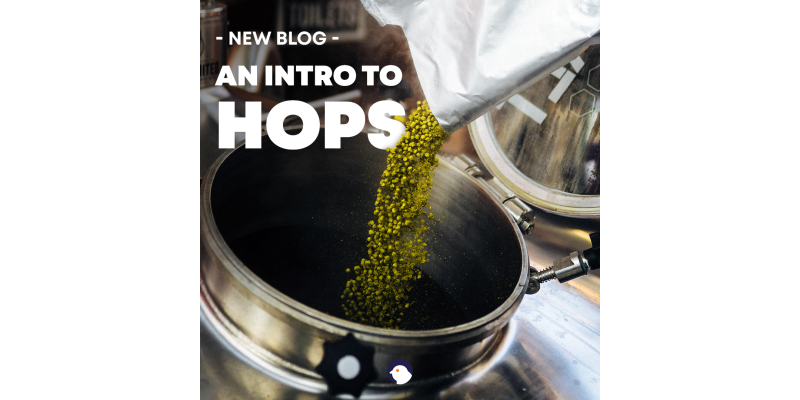An introduction to hops

A short introduction
Before the Middle Ages beer was mainly brewed with water, grain and gruit. This last ingredient was a mixture of herbs that was different for every beer. It was used to give certain flavours to the brew. People knew about hops, but it wasn't a widely used ingredient. That all changed - thank Ninkasi - when nobility and churches decided to tax gruit. Brewers quickly changed to hops and the world of beer never was the same. Not only the taste improved, but the product could also be preserved longer.
What is hop?
Humulus lupulus is a flowering plant native to Europe, western Asia and North America. It belongs to the hemp family Cannabaceae. That's right - hop is the little brother of cannabis. The herbaceous climbing plant can grow up to 10 meters (33 feet), and get to the age of 20 years. It has both male and female plants. Only the latter are used for brewing. These are the famous cone-shaped flowers, commonly called hops. They can't be used if they are pollinated, so the plants are strictly separated.
Most hop is produced in the United States and Germany. In fact, these countries each produce much more than the other top 10 countries combined.
Hops in beer
While hops are mostly known for their bittering characteristics, that is only part of their quality. Roughly, there are 3 types of hops - bittering, aroma and dual purpose. They all have their own benifits, further explained below. Another big advantage of hops is that they have an antibacterial effect over less desirable microorganisms.
Bittering hops
This type is aptly named, because these are mainly used for the bitter flavour they provide. This is because they have have higher concentrations of alpha acids. They are usually boiled for a longer period of time, which evaporates most aromatic compounds.
Aroma hops
Aroma hops are used for their unique aroma and (the non-bitter part of the) flavour palette. They are typically added to the wort later, to prevent the evaporation of the essential oils. They can even be added after the wort cools down. This is called dry hopping. There are many different varieties availably. They range from floral and citrus to piney and earthy, and many more.
Dual purpose hops
Hops that can be used for both ends are called dual purpose. They have high concentrations of alpha acids, but also impart a nice aroma. Depending on the desired outcome, these can be added to the boil at any time.
Find the Birdys selection of hops here.




